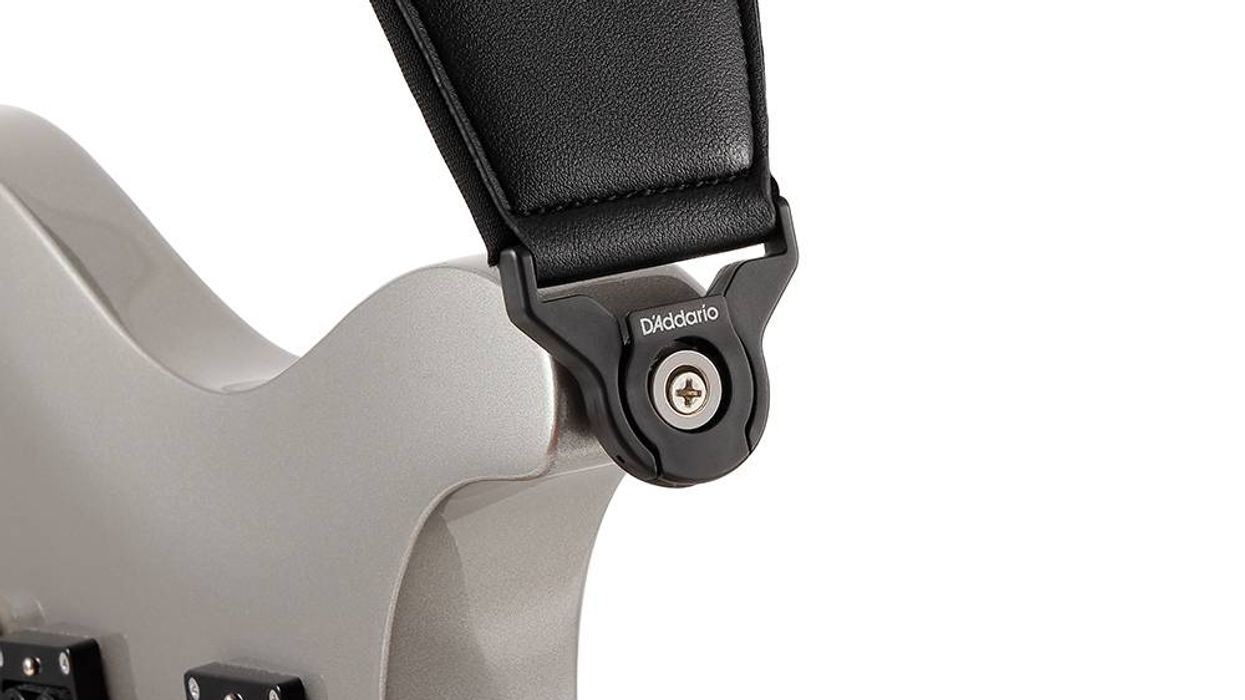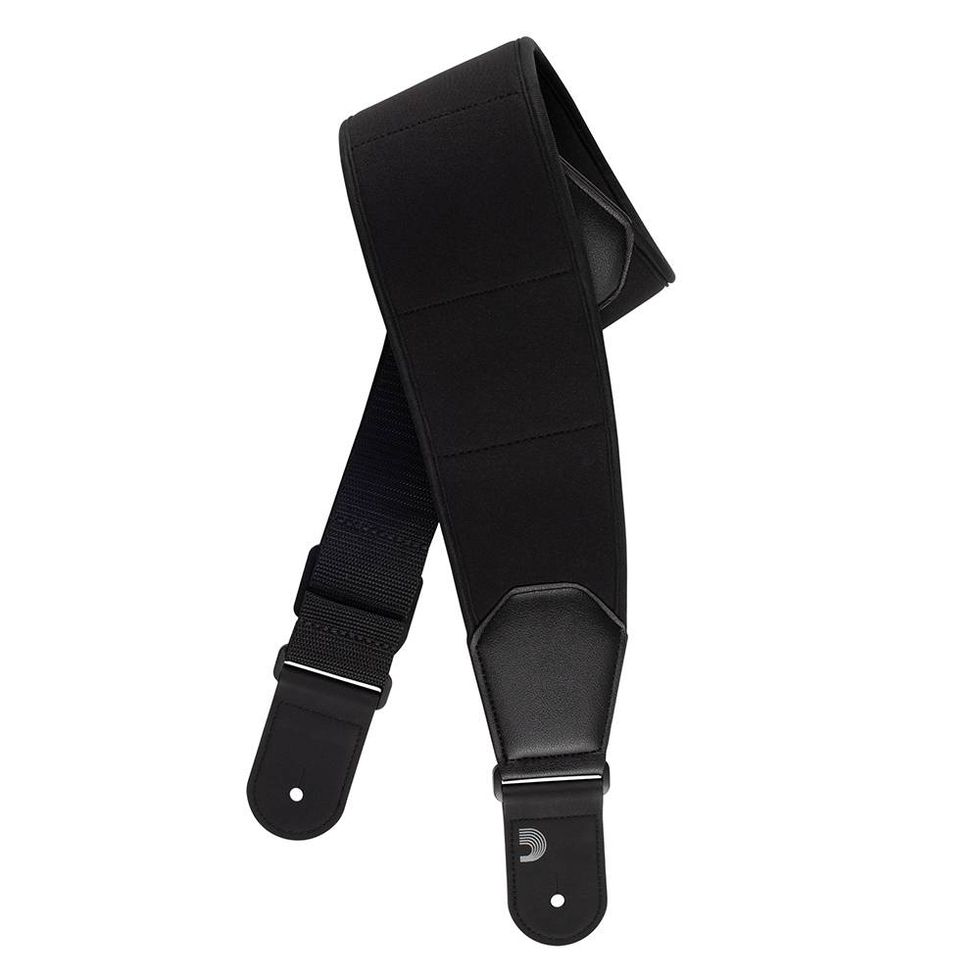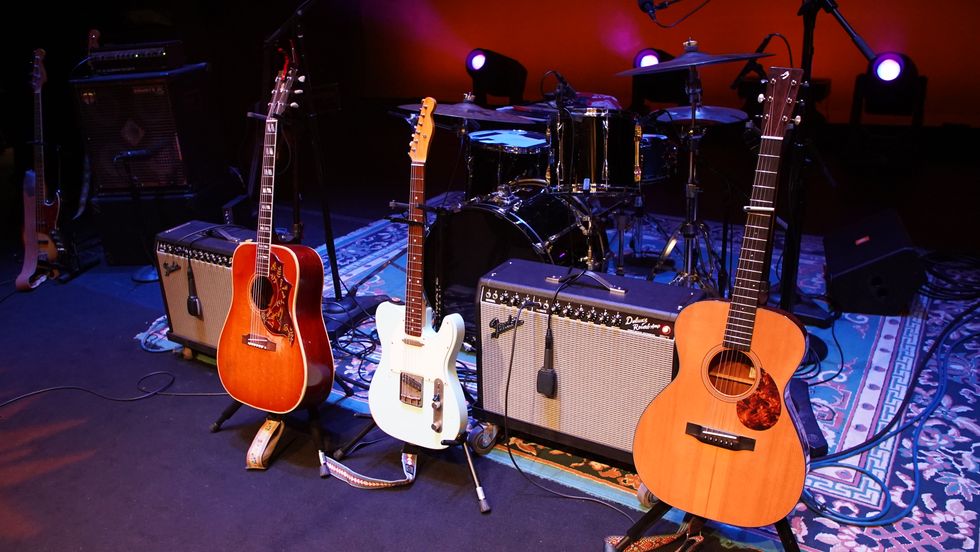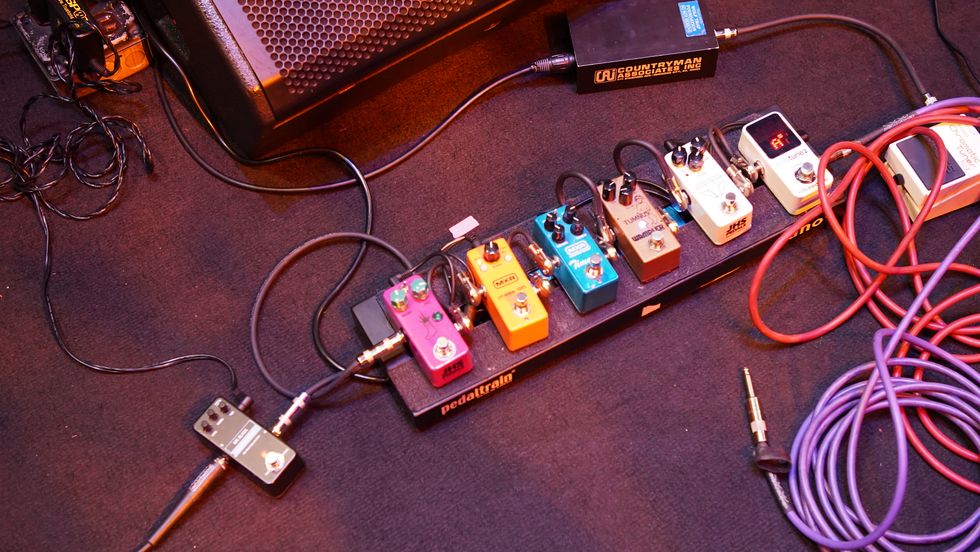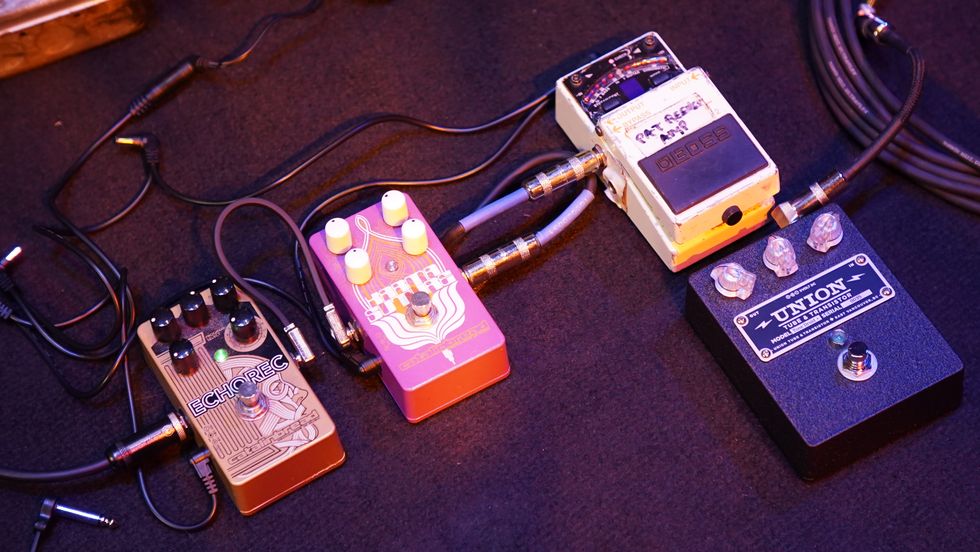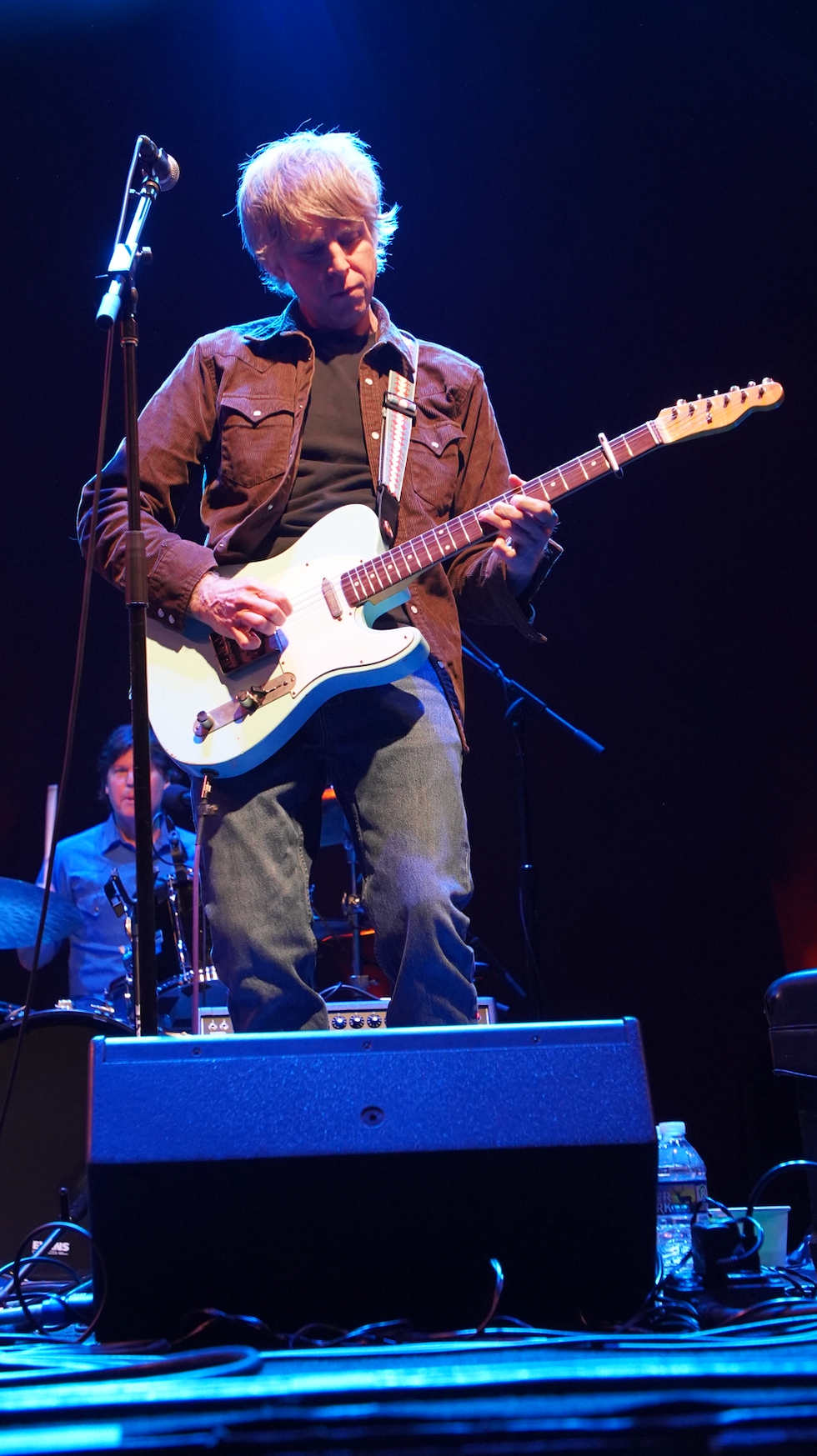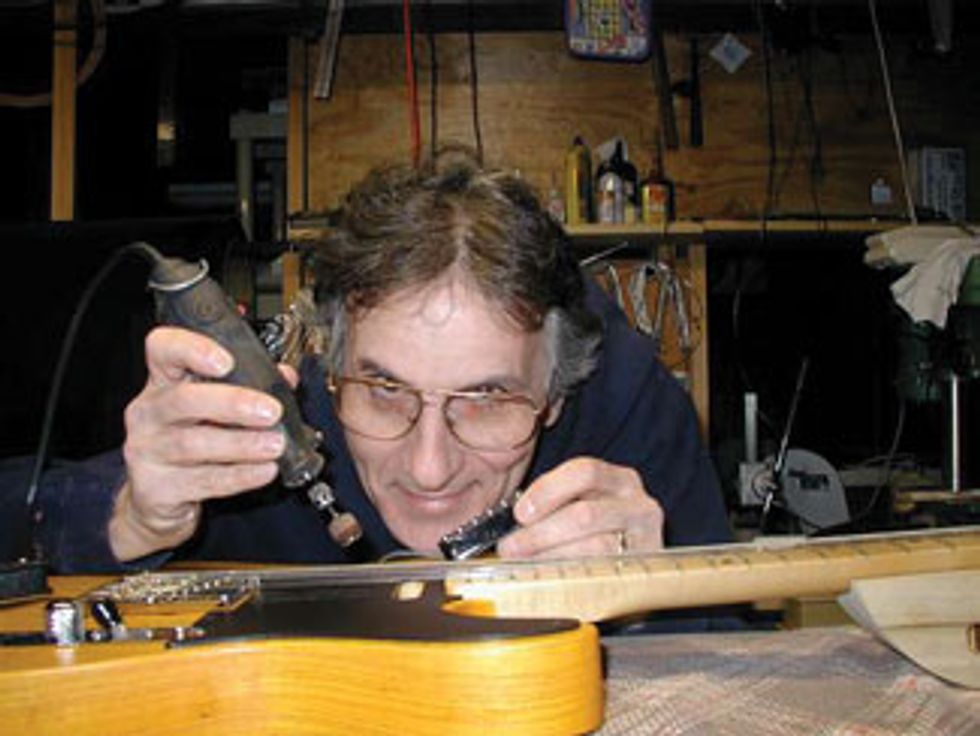
Fret Tech’s Rob DiStefano hard at work in his New Jersey shop.
I was out on the road recently for some live shows and studio recordings. Within a short period of time, my guitar went from its comfy, climate-controlled home into freezing temperatures hovering around zero, and then directly down into the heat and humidity of the Caribbean.
Traveling in planes, trains, and automobiles, my guitar took a beating. As we prepared for an outdoor show in the sun, its strings started buzzing so badly on the 2nd fret, they sounded like a sitar. After looking online to learn how to do an emergency tweak, I got through the show. But when I got back home, the action got so high it hurt my hands to play this guitar, and I was unable to record with it. In frustration, I took it to Rob DiStefano at Fret Tech in New Jersey. A veteran builder and top-flight repairman since the mid ’60s, DiStefano made the neck good as new with a few twists. While I was there, I asked him how to deal with this problem if it happens again. Our conversation went something like this.
What if I’m on the road and the guitar
starts buzzing badly?
Typically, it means that the neck is bowed
up—in other words, the fretboard is arching
higher than it should, which creates a slight
convex curve somewhere in the middle of
the playing area. [This hump is sometimes
referred to as back bow or reverse bow.]
When a guitar is set up properly, the fretboard has a very subtle concave curve. That’s called relief, and it provides enough room for the strings to vibrate freely without hitting the frets. When the fretboard bows up in the middle, you have less relief, and this reduces the angle between the saddle and any strings pressed against a fret. With a smaller angle, the strings have more opportunity to touch the fret in front of it. This contact causes buzzing.
To correct the problem, first you need to check the neck relief. Here’s how to do it: Press and hold the low E string at the 1st fret. Then—while still fretting the 6th string—take your right-hand pinky and fret this string somewhere just past the 12th fret. For example, try the fret nearest where the neck joins the body. Finally, while holding the low E against both frets, bounce that big E string with your right-hand thumb. As you do this, notice how much space there is between the bottom of the low E and the top of the 7th or 8th fret.
When the fretboard is bowed up, you might observe a very tiny gap. That’s unacceptable because it’s too small to allow the strings to vibrate freely while you’re playing. In a worst-case scenario, the strings will actually be resting against the frets. Either way, you’ll need to fix the problem by adjusting the truss rod to add some neck relief. You want to prevent the big strings—which make large excursions when they move—from rattling against the frets.
If you’re going to do that, the words to remember are “lefty loosey, righty tighty.” In this case, we’re loosening the truss rod to allow the string tension to pull the neck forward a little, thus creating a convex curve in the fretboard.
To loosen the truss rod, insert the wrench into the truss rod nut and turn it left—that’s counter-clockwise if you’re facing the nut. This will relieve some of the stress on the truss rod and add some forward bow to the neck. In the process, you’ll increase the space between the strings and frets, and thus eliminate the buzzing. Typically, it takes more than one truss rod adjustment to get the desired amount of neck relief. It’s wise to go slowly—1/4 of a turn at a time.
What does turning it to the right do, and
why might you try that?
Turning the truss rod clockwise—again
you’re facing the truss rod nut—tightens
the truss rod, bows the fretboard up in the
middle, and decreases the space between
the bottom of the strings and the frets. You
do this when string tension has created too
much space between the strings and frets,
making the guitar hard to play.
Neck relief and intonation are two separate
issues, right?
That’s right. Neck relief accommodates the
arc of the vibrating strings. Intonation is
changing the length of the strings so that
the open string and the octave of that open
string are in tune with each other.
But you can never really get it perfect,
correct?
Fretted instruments are never perfect. We
want a guitar to sound in tune from the
cowboy zone to the shred zone, and guitarists
put a large emphasis on chords. To do
this we often have to fudge the intonation
to make it work. So yes, it’s never going
to be perfect, it’s just going to be relatively
good. That’s all you can ask for.
How do either dry or moist conditions
affect the guitar neck?
If the neck is made of wood, it’s going to
swell in humid conditions, and shrink in
dry conditions. This especially occurs to
unfinished fretboards, and also the bodies
and bridges of acoustic guitars.
I often hear people say, “You know, it’s summertime and always humid, so my guitar is never going to get dry.” I ask them, “Do you ever play in an air-conditioned room?” If they say yes, I explain that an air conditioner sucks moisture out of the air. Too much humidity is not nearly as critical as having no humidity. So if your environment is dry, try to keep your guitar moisturized with one of the many commercial guitar-humidifying products, and use a humidity gauge to monitor the inside of your guitar case.
 Rich Tozzoli is a
Grammy-nominated
engineer and mixer who
has worked with artists
ranging from Al Di
Meola to David Bowie.
A life-long guitarist, he’s
also the author of Pro Tools Surround
Sound Mixing and composes for the
likes of Fox NFL, Discovery Channel,
Nickelodeon, and HBO.
Rich Tozzoli is a
Grammy-nominated
engineer and mixer who
has worked with artists
ranging from Al Di
Meola to David Bowie.
A life-long guitarist, he’s
also the author of Pro Tools Surround
Sound Mixing and composes for the
likes of Fox NFL, Discovery Channel,
Nickelodeon, and HBO.




